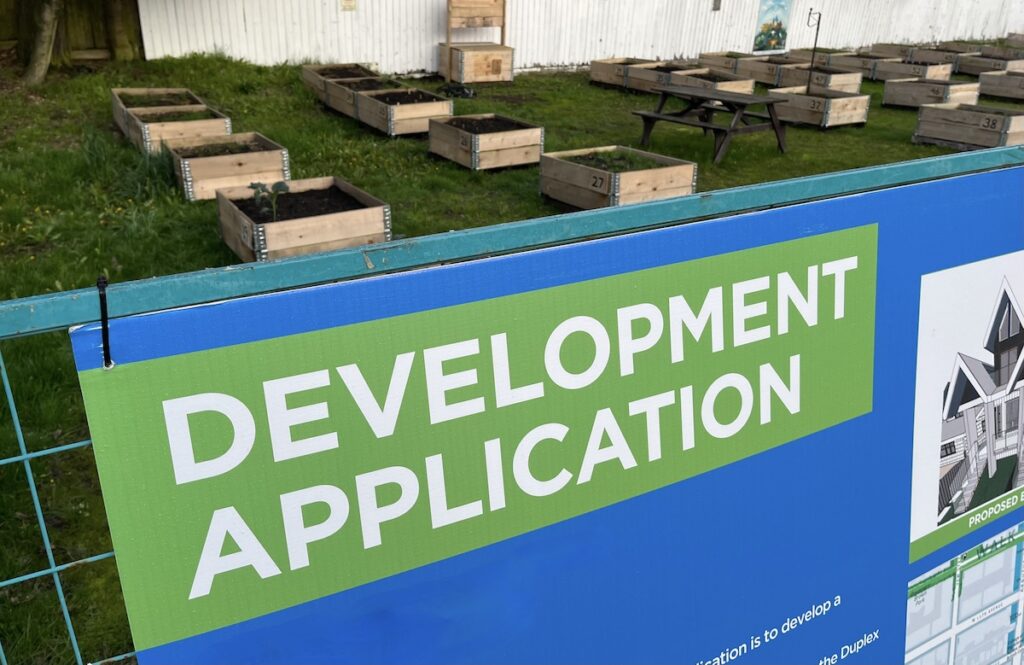How to Save a Community Garden from Development

There are a number of lots throughout Canada that have been used to grow community gardens for many years. Some have been designated as temporary, others have been considered semi-permanent. But as urban densification expands, these gardening spaces are threatened by new development. It’s a downer for the community, but is especially heartbreaking for local children who have learned to love the thriving plants, fruits, vegetables, and presence of pleasant pollinators. While most people feel powerless against such a thing, we want Canada’s children to feel empowered to initiative change, or in this case protect what remains.
To be clear, we’re not suggesting that you chain yourselves to a tree or tomato trellis. Instead, we encourage you to encourage your children/students to use their voice. It may not be as grown as yours, but their message is often heard significantly louder. To accomplish this, help your kids/students form a community garden Board of Directors and proceed to do the following.
5 Ways Kids (with the help of parents/teachers) can Help Protect Community Gardens from Being Replaced by New Construction
Connect to Your Province’s Land Conversancy
The land your community garden is on, or adjacent to, may hold special meaning and/or serve a particular function that has not yet been officially recognized. This is where Land Conservancies can come to the rescue. These organizations protect important habitats for plants, animals and natural communities as well as properties with historical, cultural, scientific, scenic or compatible recreational value.
Together with your children/students, reach out to the organization in your region and speak them about the concern for your garden. For example, in British Columbia, you may approach The Land Conservancy (TLC) of BC regarding assessments and potential courses of protective action. Every province will have its own group that could help you identify whether or not your community garden’s land fits the category for conservation.
Petition Your Local Municipality
Even if the land the community garden is on does not qualify for conservation, have your children petition the local municipality to halt development until a compromise can be made (more on this below). The Board of Directors’ Chief Marketing Gardener can work with the Chief Technology Gardener to put together a letter writing campaign in addition to a series of videos that showcase the garden complete with testimonials from local children and others who enjoy the space. Bombard (via emails and DMs) decision makers of the municipal board with the request. You may find them to be more responsive when communications come from organized children in the community. If there is a Development Application currently in review, your kids may intervene in time for amendments to be made.
Petition the Developers
Concurrently with your kids/students petition to the local municipality, have them send the same “Save Our Garden” campaign materials (letters and videos) directly to the decision makers of the local development company. The existing community garden may be small enough for them to build adjacent to, or around, so that it does not have to be destroyed.
Ask Developers to Consider Gardening Integrations
What happens if you receive a response from developers about their willingness to listen to your children’s plea? Understanding that the odds are slim of saving the garden in its entirety, you should have plans in place that can help each party get what they want. The developer will not likely have the time, know-how, or willingness to come up with a plan. That responsibility falls and you and your young horticultural-activists.
Thankfully, there have been many developments in urban farming from which you can draw inspiration. Urban greenhouses, floating forests, high-rise rooftop gardens, and aquaponics have revolutionized the potential for gardening amidst urban sprawl. View more on these urban gardening programs and be prepared to present alternatives to developers. In doing so, you may help them qualify for federal and provincial rebates, grants, and other incentives for supporting green-building in Canada.
Take it to the Media
If all else fails, take your cause to the media. Direct communications with governing bodies and developers may not have worked, but when they get unwelcome exposure in the news (local TV, newspaper, etc.) they may concede or work with you to maintain some semblance of an urban gardening project within the new development. This serves your needs, and theirs through positive public relations.
In addition to getting support from mainstream media, see what momentum you can build for your cause on social media. Calling for the community to rally around your cause can become a viral initiative that may encourage developers to come to a compromise.
Whether your kids’ campaign to save a community garden is a success or not, they will learn VERY valuable lessons through this activity. A squeaky wheel doesn’t get fixed every time, but it does more than the one that does not make a sound at all.








